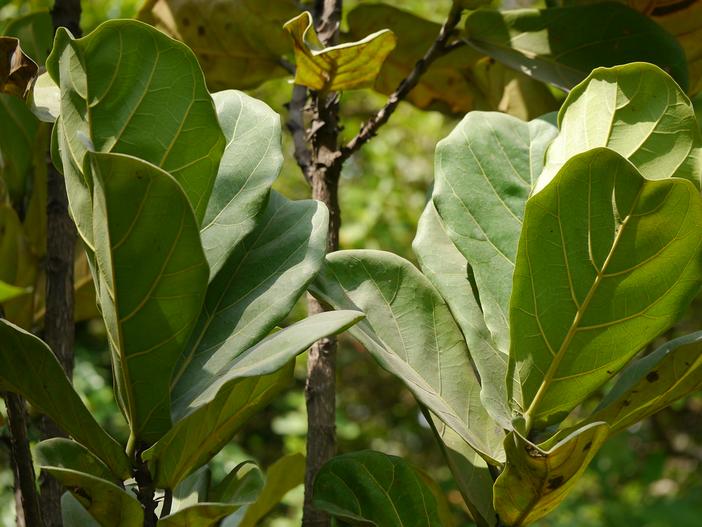Fiddle-Leaf Fig
(Ficus lyrata)
Fiddle-Leaf Fig (Ficus lyrata)
/
/

Dinesh Valke
CC BY-SA 2.0
Image By:
Dinesh Valke
Recorded By:
Copyright:
CC BY-SA 2.0
Copyright Notice:
Photo by: Dinesh Valke | License Type: CC BY-SA 2.0 | License URL: https://creativecommons.org/licenses/by-sa/2.0/ | Uploader: Dinesh Valke | Publisher: Flickr



























Estimated Native Range
Summary
Ficus lyrata, commonly known as the fiddle-leaf fig, is a broadleaf evergreen tree native to the lowland tropical rainforests of West Africa. It can grow up to 12–15 m (39–49 ft) tall in its natural habitat, but when grown as a houseplant in temperate areas, it typically remains much shorter and is unlikely to flower or fruit. The fiddle-leaf fig has large, glossy, violin-shaped leaves that can grow up to 45 cm (18 in) long and 30 cm (12 in) wide, which contribute to its ornamental value. Its natural environment consists of warm and humid conditions, which should be replicated as much as possible when grown indoors.
The fiddle-leaf fig is appreciated for its striking foliage and architectural presence, making it a popular choice for interior design. It is often used as a focal point in living rooms and offices. While it is relatively easy to maintain, it requires consistent care and does not respond well to changes in its environment. It thrives in bright, filtered light and should be protected from direct afternoon sun. The plant prefers a stable temperature and high humidity, and it benefits from regular watering when the top inch of soil is dry. Overwatering or poor drainage can lead to root rot. The fiddle-leaf fig has been awarded the Royal Horticultural Society’s Award of Garden Merit, indicating its value for cultivation and design.CC BY-SA 4.0
The fiddle-leaf fig is appreciated for its striking foliage and architectural presence, making it a popular choice for interior design. It is often used as a focal point in living rooms and offices. While it is relatively easy to maintain, it requires consistent care and does not respond well to changes in its environment. It thrives in bright, filtered light and should be protected from direct afternoon sun. The plant prefers a stable temperature and high humidity, and it benefits from regular watering when the top inch of soil is dry. Overwatering or poor drainage can lead to root rot. The fiddle-leaf fig has been awarded the Royal Horticultural Society’s Award of Garden Merit, indicating its value for cultivation and design.CC BY-SA 4.0
Plant Description
- Plant Type: Tree
- Height: 60-12 feet
- Width: 30-3 feet
- Growth Rate: Slow
- Flower Color: N/A
- Flowering Season: Summer
- Leaf Retention: Evergreen
Growth Requirements
- Sun: Part Shade
- Water: Medium
- Drainage: Medium
Common Uses
Potted Plant
Natural Habitat
Lowland tropical rainforests of West Africa
Other Names
Common Names: Lyrate-Leaf Fig, Fiddle-Leaf Fig, Lyre-Leaf Figtree, Banjo Fig, Fiolfikus, Arbol Lira, Geigen-Feige, Jaguey Lirado, 琴葉榕
Scientific Names: , Ficus lyrata, Ficus pandurata, Ficus jollyana,
GBIF Accepted Name: Ficus lyrata Warb.